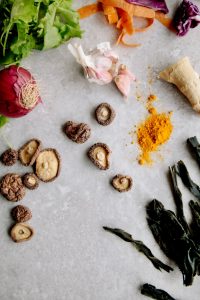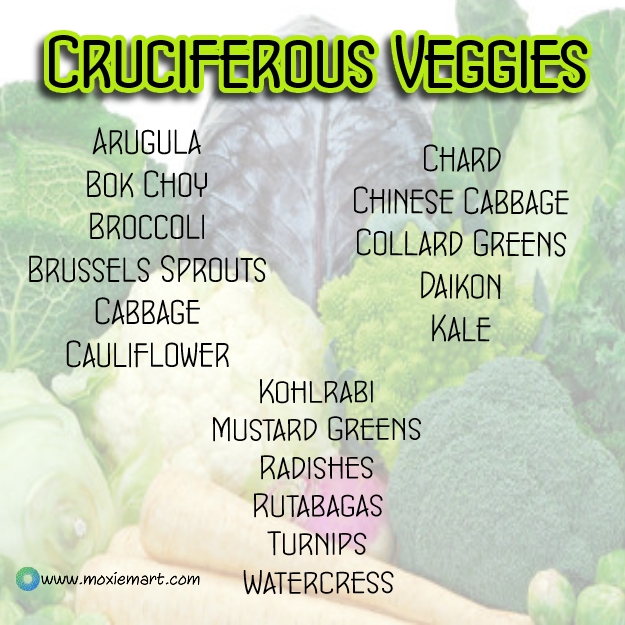 Apparently, animal products are absolutely essential for gut healing, which I find very hard to believe or understand. After searching forums, all I can find is people frustrated with the lack of choice for veggies and vegans and people encouraging them to compromise their ethics, as this is “the only way”.
Apparently, animal products are absolutely essential for gut healing, which I find very hard to believe or understand. After searching forums, all I can find is people frustrated with the lack of choice for veggies and vegans and people encouraging them to compromise their ethics, as this is “the only way”.
One particular “superfood” related to gut-healing that I’ve seen talked about a lot, is Bone Broth. You might have seen a lot about it in the news and media, as it seems to be a health trend at the moment. I’ve read a few books and articles that INSIST this is the number one thing you need for healing your gut and that if you leave it out, you’re not going to the best results and healing will be much slower.
So I decided to look into what exactly it is about bone broth is apparently so fascinating… and was very underwhelmed.
Bone Broth is Nothing Special
Turns out, the most beneficial nutrients and electrolytes in bone broth can be found in vegan-friendly sources and the one thing that sets itself apart, the thing that is impossible for vegans to find a veggie replacement for is the collagen.
Our bodies can’t even digest collagen whole. We simply absorb the nutrients from our food which provides our bodies with the building blocks it needs to naturally create collagen, if and when it needs it.
Eating collagen does not equal having more collagen. “Just as the dietary fat you swallow doesn’t directly translate to body fat, swallowing collagen doesn’t become collagen in or between your bones.”
Kantha Shelke, a food scientist says “Eating a diet rich in leafy green vegetables is ideal. Plants offer richer sources in collagen building blocks and, in addition, provide nutrients not found in sufficient quantities in meats or broth.”
Healing the stomach lining
And as for it being healing for the stomach lining, particularly from the gelatin, there are some great plant-based sources for that too. Particularly fermented foods.
There are many other foods that have been shown to contribute towards healing the stomach lining and digestive tract, such as seaweed, aloe vera, healthy fats and turmeric.
Vitamins and minerals
Obviously, all the calcium, potassium and other minerals found in bone broth are more than easy to find in plant-based foods plus they contain much, much more goodness.
So the animal product-reliant parts are kind of useless… Or at the very least, unnecessary and over-hyped. It’s all in aid of making what our bodies already naturally produce and plant-sourced vitamins and minerals are the best option to actually help it do that.
 Gut-Healing Vegetable Broth And Why It’s Better Than Bone Broth a Plant-Based Option Works The Same If Not Better
Gut-Healing Vegetable Broth And Why It’s Better Than Bone Broth a Plant-Based Option Works The Same If Not Better
So now we’ve established that the bones in this healing broth are not only unnecessary but also not as nutritious as plant-based sources, it seems pretty clear that using a bunch of wholesome plant-based ingredients is going to be WAY more healing. And way more appealing, too.
Although, I should say that I haven’t come across any evidence of the healing benefits of slow-cooking or broth, in general. It doesn’t do much to enhance the nutrients but there is definitely something that feels healing when drinking broth. It’s warming, it’s comforting, it’s full of goodness and it tastes good.
The bottom line though is that we shouldn’t be relying on a broth to heal our gut! Because that’s silly. Also, many foods that help heal the gut need to be eaten raw (such as fermented foods and cabbage juice) so adding them to a broth is counter-productive.
But the aforementioned benefits are good enough reason to make it. Plus, it’s delicious and a great way to use up peelings, scraps and leftovers.
Vegan Bone Broth Alternative
This has lot’s of nutritional goodness that is great for overall health but particularly focuses on plenty of gut-healing properties. Feel free to switch up, leave out or add in any ingredients you like, to suit your diet and taste.
The Six main stars are:
Wakame seaweed: Great source of omega 3 – one of the best for vegans, great for intestinal health, full of vitamins and minerals (particularly good source of iron, calcium, magnesium and iodine). Not suitable for SCD diets, leave out as necessary.
Shiitake mushrooms: Gives the most amazing, comforting flavour. Full of vitamins and minerals (great source of vitamin D – especially if sun dried, zinc and B vitamins). Contains all essential amino acids. Prebiotic.
Coconut oil or olive oil: Healthy fats with a good omega ratio that help absorb nutrients.
Turmeric: Powerful anti-inflammatory plus adds delicious flavour and a beautiful colour.
Spinach or kale: Full of vitamins and minerals (particularly high in Vitamins K, A and C, magnesium and calcium). Also a good source of protein and omega 3. Prebiotic.
Coconut aminos: Mainly used for flavour but also gives the benefit of it’s amino acids. May not be suitable for some diets as it’s considered a sugar, so leave out if necessary.
 A nutritious, gut-healing broth as a vegan alternative to bone broth. If you don’t like or can’t find any ingredients, don’t worry. Add what flavours you like and try to get as much variety and nutritional goodness as you can!
A nutritious, gut-healing broth as a vegan alternative to bone broth. If you don’t like or can’t find any ingredients, don’t worry. Add what flavours you like and try to get as much variety and nutritional goodness as you can!
Serves: 8
INGREDIENTS
12 cups (2¾ litres) filtered water
1 tbsp coconut oil or extra-virgin olive oil
1 red onion, quartered (with skins)
1 garlic bulb, smashed
1 chilli pepper, roughly chopped (with seeds)
1 knob ginger, roughly chopped (with skin)
1 cup greens such as kale or spinach
3-4 cup mixed chopped vegetables and peelings (I used carrot peelings, red cabbage, fresh mushrooms, leeks and celery)
½ cup dried shiitake mushrooms
30g dried wakame seaweed
1 tbsp peppercorns
2 tbsp ground turmeric
1 tbsp coconut aminos*
A bunch of fresh corriander or other herb of your choice (plus extra, to serve)
(optional) ¼ cup nutritional yeast, for extra flavour and vitamins
INSTRUCTIONS
-Simply add everything to a large pot. —Bring to a boil then simmer, with the lid on, for about an hour.
-Once everything has been cooked down, strain the liquid into a large bowl.
Serve immediately with some fresh herbs, for decoration or cool for later.
It also freezes well.??
NOTES
*Coconut aminos can be very salty, depending on what brand you use so taste before adding any additional salt.



 Let’s talk cruciferous vegetables and why we love them and use them daily here at Raw Juice Guru, these are some of the cruciferous vegetables:
Let’s talk cruciferous vegetables and why we love them and use them daily here at Raw Juice Guru, these are some of the cruciferous vegetables:
 33 percent of us meet the recommendation for fruit consumption, and fewer than 30 percent of adults eat the recommended servings of vegetables.
33 percent of us meet the recommendation for fruit consumption, and fewer than 30 percent of adults eat the recommended servings of vegetables.